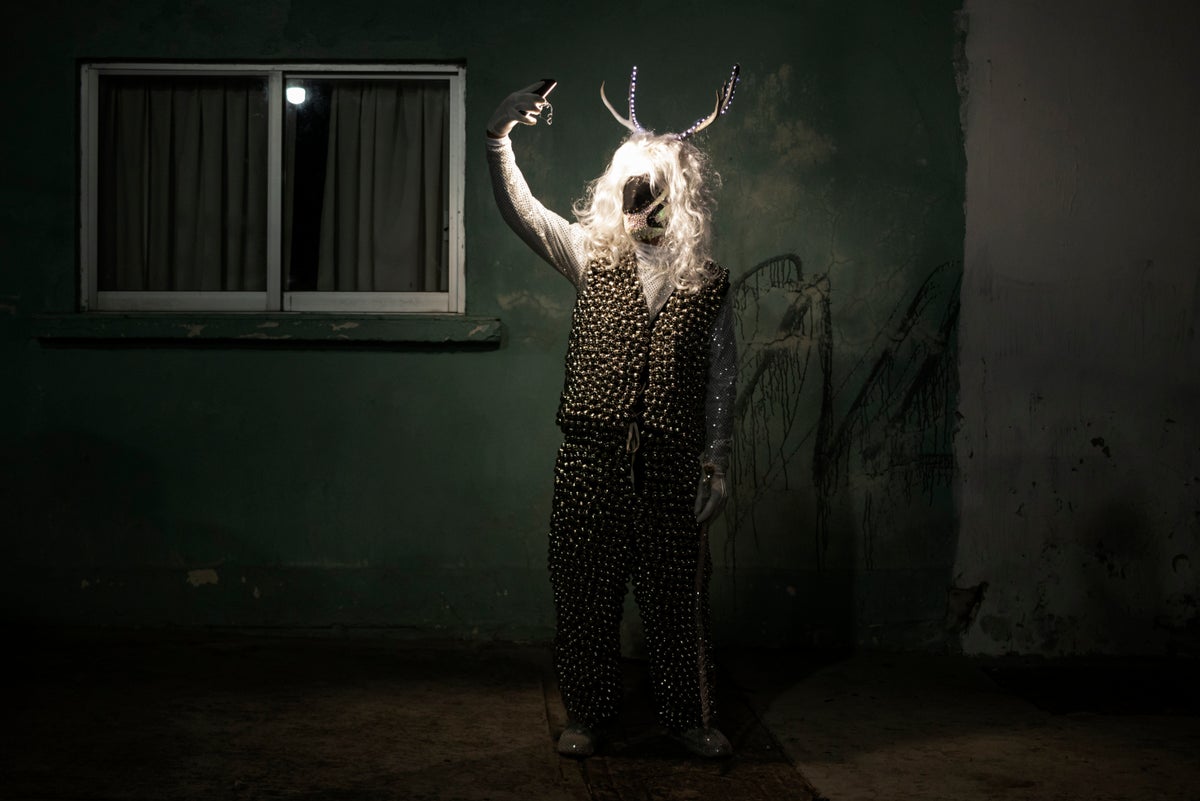
Daniel Dávila knew he would become a devil at age 12.
He prepares his costume weeks ahead of Day of the Dead celebrations in San Agustín Etla, in southwest Mexico, where families take to the streets on Nov. 1 to remember how death can be as joyful as life.
In the state of Oaxaca, where the 33-year-old lives, “muerteadas” are part of a festival that stretches for several nights and locals regard as part of their identity. Each celebration differs from one town to another, but most take off at the main church, where participants and musicians sing to honor their local saints. Afterward, volunteers like Dávila take part in a theatrical representation in which a spiritist, one special character with supernatural capabilities, brings a dead man back to life.
Dávila’s role, the devil, is a playful character who tries to lure the resuscitated man into following him. Among other characters are a priest, a doctor and an old man whose daughter is married to the deceased.
“I’ve participated in muerteadas since kindergarten,” Dávila said, hands on the devil suit he crafted with dozens of sleigh bells sewed to the cloth. “I love it because it’s an inherited tradition.”
The staging of muerteadas is humorous for participants and spectators alike. All characters speak in verses and dialogues are full of the communities’ gossip and political satire. Though there's a script to guide the actors, improvisation is expected.
Once the acting ends, to cheer that life prevailed, the night goes on with a procession led by a band. People dance, drink mezcal and visit neighbors' homes until the celebration fades by the cemetery on the following day.
“It’s a very special time because muerteadas are not just dances and drinking,” Dávila said. “It’s a time for sharing what provides us with joy.”
The most ancient muerteadas were processions led by entire families wearing jaguar masks, said Víctor Cata, the local secretary of culture.
In the pre-Hispanic times, people feared that the sun would not rise and consequently life would end. According to this belief, women would turn into monsters and devour humans, so people hid under their masks and held vigils.
“San Agustín Etla has Zapotec origins,” Cata said. “But like any living culture, the ways of honoring death change and now we can see a blissful celebration.”
Efraín García, 57, lives in neighboring San José Etla and during this year’s muerteadas he will dress as the spiritist. His costume is a cloak covered in 800 mirrors that took him a week to sew and weighs around 70 pounds.
“We celebrate this tradition because our dearly departed liked it,” said García, whose children craft costumes for others to buy. “Within the sadness, we carry on with happiness because we believe that their souls are with us on these days.”
Organizers start working on next year’s festivities as soon as the current one ends, said Horacio Dávila, who is Daniel’s cousin. “As early as December, we look for a music band that will suit our muerteadas.”
This event doesn’t come cheap, Dávila said. Participants in certain towns pay a fee to play a character during the theatrical representation, while neighbors are expected to contribute to hiring the band. Devil and spiritist costumes can cost up to 800 U.S. dollars.
It’s part of a tradition, though, Dávila said, and for most locals it is the most awaited season.
“Some things hurt us Mexicans but then we handle it with laughter, with mockery,” he said. “When I die, don’t cry for me, I tell people. Bring on the music and be glad that I’m resting.”







